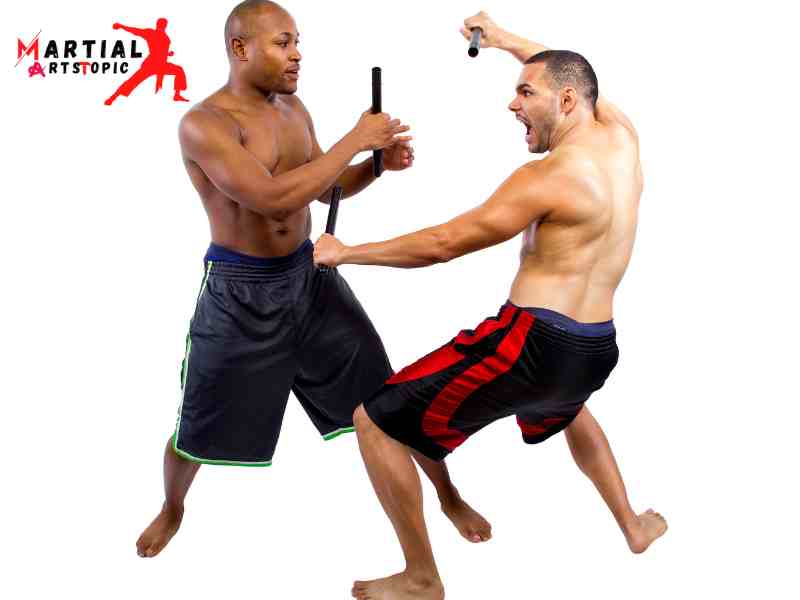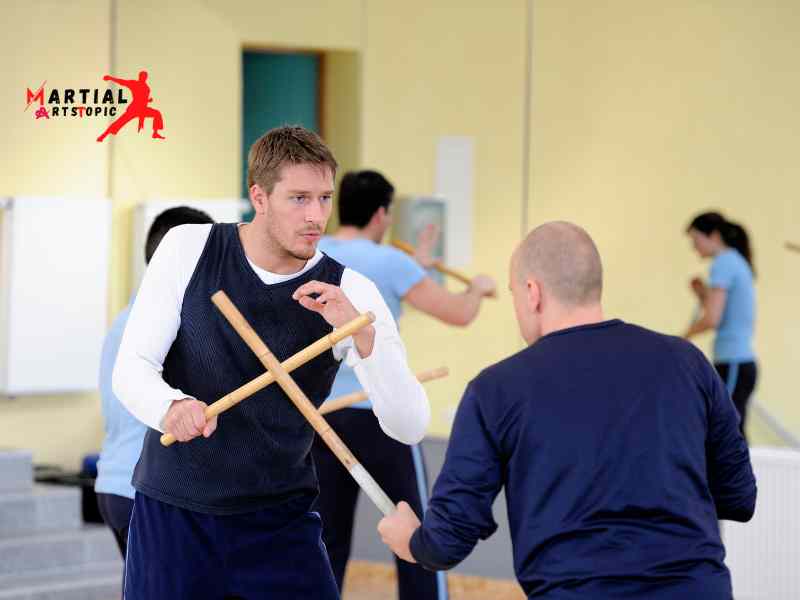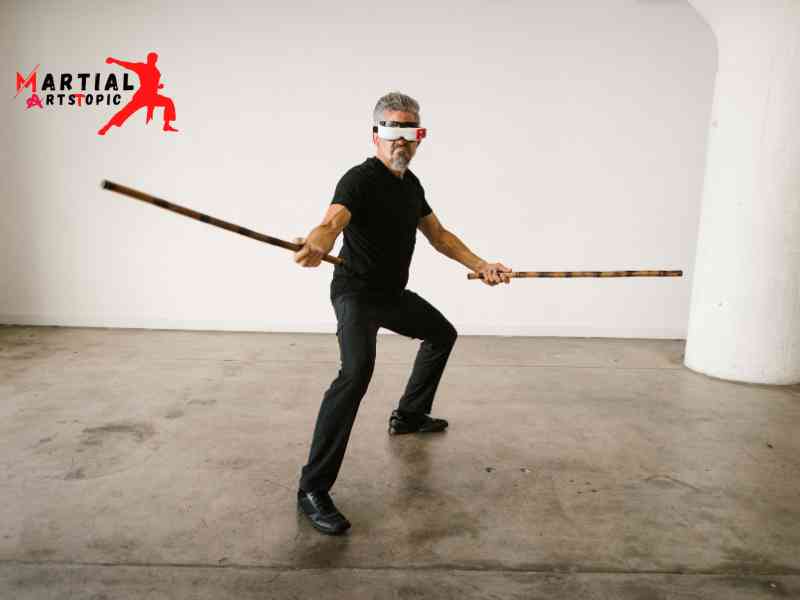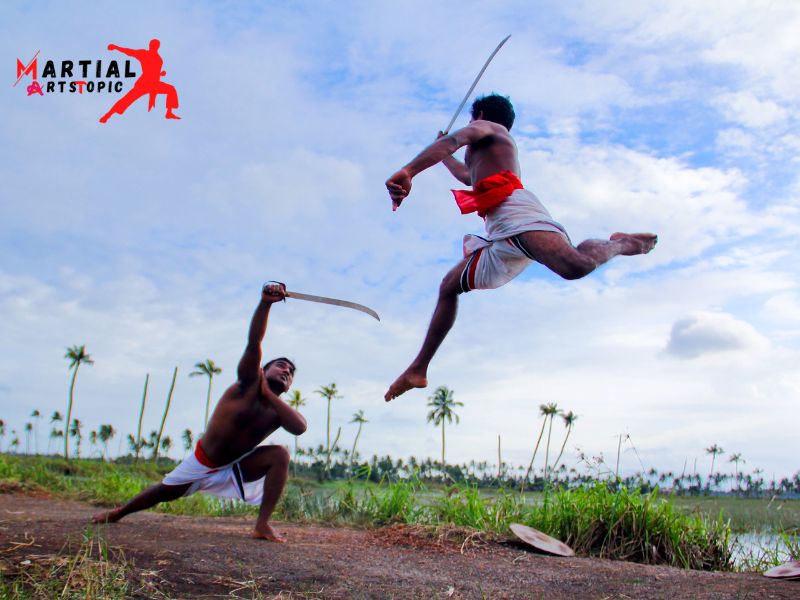
The History and Origins of Kali Martial Arts
The History and Origins of Kali Martial Arts Kali martial arts, also known as Eskrima or Arnis, is a fascinating combat system that originated in the Philippines. This traditional martial art has a rich history and is characterized by its unique weapon-based fighting techniques. In this blog post, we will explore the origins of Kali martial arts and delve into its fascinating history.
Kali martial arts traces its roots back to the pre-colonial era of the Philippines. The indigenous people of the archipelago developed this combat system as a means of self-defense and protection against invading forces. Oral tradition kept the art of Kali alive through generations, passed down from master to student.
One of the defining aspects of Kali martial arts is its emphasis on weapons training. Practitioners of Kali learn to wield various weapons, including sticks, knives, swords, and even improvised weapons. This focus on weaponry sets Kali apart from other martial arts, making it a unique and formidable combat system.
The name “Kali” itself has various interpretations. Some believe they derived it from the Filipino word “kalis,” which means “blade” or “sword.” Others suggest it is a reference to the Hindu goddess Kali, known for her fierce nature. Regardless of its origins, Kali martial arts embody the spirit of strength, agility, and precision.

During the Spanish colonization of the Philippines in the 16th century, Kali martial arts faced suppression as the Spanish authorities sought to impose their own cultural practices. However, the Filipino people successfully preserved their martial art by adapting it to appear as a harmless dance known as “Eskrima.” This clever disguise allowed Kali practitioners to continue honing their skills under the guise of harmless entertainment.
In the 20th century, Kali martial arts gained recognition beyond the borders of the Philippines. Martial arts enthusiasts from around the world became intrigued by the unique combat system and sought to learn its techniques. This led to the spread of Kali to different parts of the globe, with many Kali training schools and organizations being established.
Today, people of all ages and backgrounds practice Kali martial arts. Its practical fighting techniques make it a popular choice for self-defense training. Kali’s emphasis on weapons training provides practitioners with a deeper understanding of distance, timing, and coordination.
Exploring the Different Techniques of Kali Martial Arts: Strikes, Blocks, and More
Exploring the Different Techniques of Kali Martial Arts: Strikes, Blocks, and More Kali martial arts, also known as Eskrima or Arnis, is a Filipino martial art that emphasizes the use of weapons such as sticks, knives, and bladed weapons. It is a highly effective self-defense system that has gained popularity worldwide. In this blog post, we will delve into the various techniques of Kali martial arts, focusing on strikes, blocks, and more.
- Strikes: Kali martial arts are renowned for its wide range of striking techniques. Practitioners learn how to deliver powerful strikes using their hands, elbows, knees, and feet. These strikes are not only effective in close-quarters combat but also in long-range engagements. By mastering the art of striking, Kali martial artists can effectively neutralize their opponents and protect themselves.
- Blocks: Blocking is a crucial aspect of Kali’s martial arts. It involves using various defensive techniques to intercept and stop incoming attacks. They trained Kali practitioners to use their weapons or empty hands to block and redirect strikes, ensuring their safety during combat. By developing quick reflexes and precise timing, practitioners can effectively defend against an array of attacks.
- Weapons Training: Kali martial arts are distinct in its emphasis on weapons training. Practitioners learn how to use traditional Filipino weapons such as sticks, knives, and bladed weapons. This training not only enhances their weapon-handling skills but also improves their understanding of distance, timing, and precision. By mastering weapons techniques, Kali martial artists gain a significant advantage in combat situations.
- Footwork: Footwork plays a crucial role in Kali martial arts. Practitioners learn various footwork patterns and stances that enable them to move swiftly, maintain balance, and generate power in their strikes. By mastering proper footwork, Kali martial artists can effectively navigate the battlefield, evade attacks, and position themselves for optimal offensive and defensive maneuvers.
- Empty-Hand Techniques: besides weapon-based techniques, Kali martial arts also include a comprehensive system of empty-hand techniques. These techniques allow practitioners to defend themselves even when they are unarmed. Kali martial artists learn strikes, joint locks, throws, and grappling techniques that enable them to neutralize opponents in close-quarters combat.
- Flow and Fluidity: One of the unique aspects of Kali martial arts is its emphasis on flow and fluidity. Practitioners focus on seamlessly transitioning between different techniques, strikes, and blocks, creating a continuous and uninterrupted flow of movement. This aspect of Kali martial arts enables practitioners to adapt to changing combat situations and maintain control over their opponents. Empty-Hand Techniques in Kali Martial Arts.
Empty-Hand Techniques in Kali Martial Arts: Mastering the Art of Self-Defense Kali martial arts, also known as Eskrima or Arnis, is a Filipino martial art that has gained popularity worldwide for its effective techniques. While something widely recognized it for its use of weapons such as sticks and knives, Kali also encompasses a comprehensive system of empty-hand techniques that are equally powerful. In this blog post, we will delve into the fascinating world of empty-hand techniques in Kali martial arts and explore how they can enhance your self-defense skills.
As one of the most practical and well-rounded martial arts, Kali offers practitioners a wide range of empty-hand techniques that can be seamlessly integrated into real-life self-defense scenarios. Whether you find yourself when you cannot access a weapon or simply prefer to rely solely on your body, Kali has got you covered.
One of the fundamental principles of Kali martial arts is the concept of “weaponizing” the body. They taught practitioners to view their entire body as a weapon, using strikes, kicks, punches, and grappling techniques to neutralize opponents effectively. By harnessing the power of the body’s natural weapons, such as the hands, elbows, knees, and feet, Kali practitioners can quickly incapacitate their adversaries.
Empty-hand techniques in Kali martial arts are known for their efficiency and effectiveness. They focus on utilizing gross motor skills rather than relying solely on fine motor skills, making them practical and accessible to people of all ages and physical abilities. Instead of complex, intricate movements, Kali emphasizes simple yet devastating strikes and techniques that can be easily executed under high-stress situations.
In Kali, empty-hand techniques are seamlessly integrated with weapon techniques, creating a cohesive and well-rounded system of self-defense. The principles and movements learned through empty-hand training directly translate to weapon techniques, and vice versa. This integration allows practitioners to seamlessly transition between armed and unarmed combat, giving them a significant advantage in any self-defense situation.
Some of the essential empty-hand techniques in Kali martial arts include:
- Panantukan (Filipino Boxing): Panantukan focuses on close-range boxing techniques, utilizing punches, elbows, and various hand strikes. It emphasizes continuous, flowing movements to overwhelm opponents and exploit their vulnerabilities.
- Sikaran (Filipino Kicking): Sikaran teaches powerful kicking techniques using the legs and feet. Practitioners learn to generate maximum power and speed in their kicks, targeting vital areas of an opponent’s body.
- Dumog (Filipino Grappling): Dumog incorporates grappling, joint locks, and throws into Kali martial arts. It is a highly effective empty-hand technique for close-quarters combat and controlling opponents.
- Buno (Filipino Wrestling): Buno focuses on takedowns, submissions, and ground fighting techniques. It equips practitioners with the skills necessary to defend themselves when taken to the ground.
By training in these empty-hand techniques, Kali martial arts practitioners develop exceptional reflexes, coordination, and situational awareness. They learn to read their opponents’ movements, anticipate attacks, and effectively defend themselves in any situation.
Benefits of Practicing Kali Martial Arts for Self-Defense

In today’s unpredictable world, it has become crucial to be equipped with the skills to protect ourselves and our loved ones. One martial art form that stands out in the realm of self-defense is Kali. With its rich history and practical techniques, Kali martial arts provide a comprehensive and effective approach to personal safety. In this blog post, we will delve into the many benefits of practicing Kali martial arts, empowering you to embrace this powerful art form and enhance your self-defense skills.
Kali martial arts, also known as Eskrima or Arnis, focus primarily on weapons-based combat. By honing your skills in weapon techniques, such as stick fighting, knife defense, and improvised weapons, you develop an unmatched proficiency in protecting yourself against potential threats. Kali martial arts empower individuals to defend themselves efficiently, regardless of their size or physical strength.
Self-Defense Mastery
Physical Fitness
Engaging in Kali martial arts involves rigorous physical training, which leads to improved strength, endurance, agility, and flexibility. The constant movement, strikes, and footwork patterns in Kali martial arts provide an intense full-body workout. As a result, practitioners experience enhanced cardiovascular health, increased muscle tone, and improved overall physical fitness.
Mental Focus and Coordination
Kali martial arts require practitioners to maintain a high level of mental focus and hand-eye coordination. The fluid and precise movements involved in Kali techniques demand concentration and quick reflexes. Through consistent practice, individuals develop heightened awareness, mental agility, and improved coordination, skills that are not only valuable in self-defense situations but also apply to other aspects of life.
Stress Reduction
The practice of Kali martial arts provides an excellent outlet for stress release. By immersing yourself in the training, your mind becomes fully engaged, allowing you to temporarily disconnect from everyday worries and stressors. The repetitive nature of drills and techniques, combined with the adrenaline rush experienced during sparring sessions, helps to ease mental and emotional tension, promoting a sense of calm and inner peace.
Self-Confidence and Empowerment
As you progress in Kali martial arts, your confidence levels soar. The mastery of self-defense techniques instills a sense of empowerment, enabling you to navigate the world with increased self-assurance. The knowledge that you possess the ability to protect yourself and others builds inner strength and resilience, which positively impacts all areas of your life.
Cultural Appreciation
Something deeply rooted Kali martial arts in Filipino culture, providing practitioners with the opportunity to explore and appreciate a rich heritage. By immersing yourself in the tradition and history of Kali, you gain a deeper understanding and appreciation for the Filipino people and their martial arts legacy. This cultural immersion fosters respect, tolerance, and a broader worldview.
Kali Martial Arts vs. Other Martial Arts: What Sets It Apart

Kali Martial Arts vs. Other Martial Arts: What Makes It Unique in martial arts, there are many styles and disciplines to choose from. Each martial art has its own principles, techniques, and cultural influences. One martial art that stands out from the rest is Kali. Also known as Eskrima or Arnis, Kali Martial Arts is a highly effective and versatile martial art with a rich history and unique set of skills.
They have passed Kali Martial Arts originated in the Philippines and down through generations. It is a weapons-based martial art that focuses on the use of sticks, knives, and bladed weapons. They train the practitioners of Kali to be proficient in both armed and unarmed combat, making it a comprehensive and practical self-defense system.
What sets Kali Martial Arts apart from other martial arts? Let’s take a closer look
Weapon-Centriq Training: Unlike many other martial arts that primarily focus on empty-handed techniques, Kali places a strong emphasis on weapons training. Practitioners learn how to handle and defend against various weapons, which enhances their overall understanding of combat and provides them with a unique advantage in self-defense situations.
Practical and Realistic Techniques: I knew Kali Martial Arts for its practical and realistic approach to combat. The techniques taught in Kali work in real-life scenarios, making it an effective martial art for self-defense purposes. Whether you’re facing an armed or unarmed opponent, Kali equips you with the skills necessary to protect yourself.
Flow and Fluidity: One of the defining characteristics of Kali Martial Arts is its emphasis on flow and fluidity. They trained practitioners to seamlessly transition between different techniques and adapt to changing situations. This fluidity allows them to respond quickly and effectively during combat, making Kali a dynamic and versatile martial art.
Cultural Heritage: it deeply rooted Kali Martial Arts in Filipino culture and heritage. It reflects the history, traditions, and values of the Filipino people. By practicing Kali, you not only learn self-defense skills but also gain a deeper understanding and appreciation of the rich cultural heritage of the Philippines.
Mental and Physical Development: Kali Martial Arts is not just about physical combat; it also focuses on mental and emotional development. Practitioners learn discipline, focus, and self-control, which can apply to all aspects of life. The training in Kali promotes personal growth and instills a sense of confidence and resilience.
In conclusion
Kali martial arts is a highly effective combat system that offers a range of benefits for practitioners. With its emphasis on weapon-based training and practical self-defense techniques, Kali equips individuals with essential skills to protect themselves in real-life situations. Kali’s focus on coordination, agility, and mental sharpness enhances overall physical fitness and cognitive abilities. Whether one is seeking self-defense skills, a challenging workout, or a deeper understanding of Filipino culture, Kali martial arts provides a comprehensive and rewarding experience. By engaging in this ancient martial art, individuals not only develop valuable skills but also cultivate discipline, confidence, and a sense of empowerment. Embark on the journey of Kali martial arts and discover the transformative power it can have on your mind, body, and spirit.
